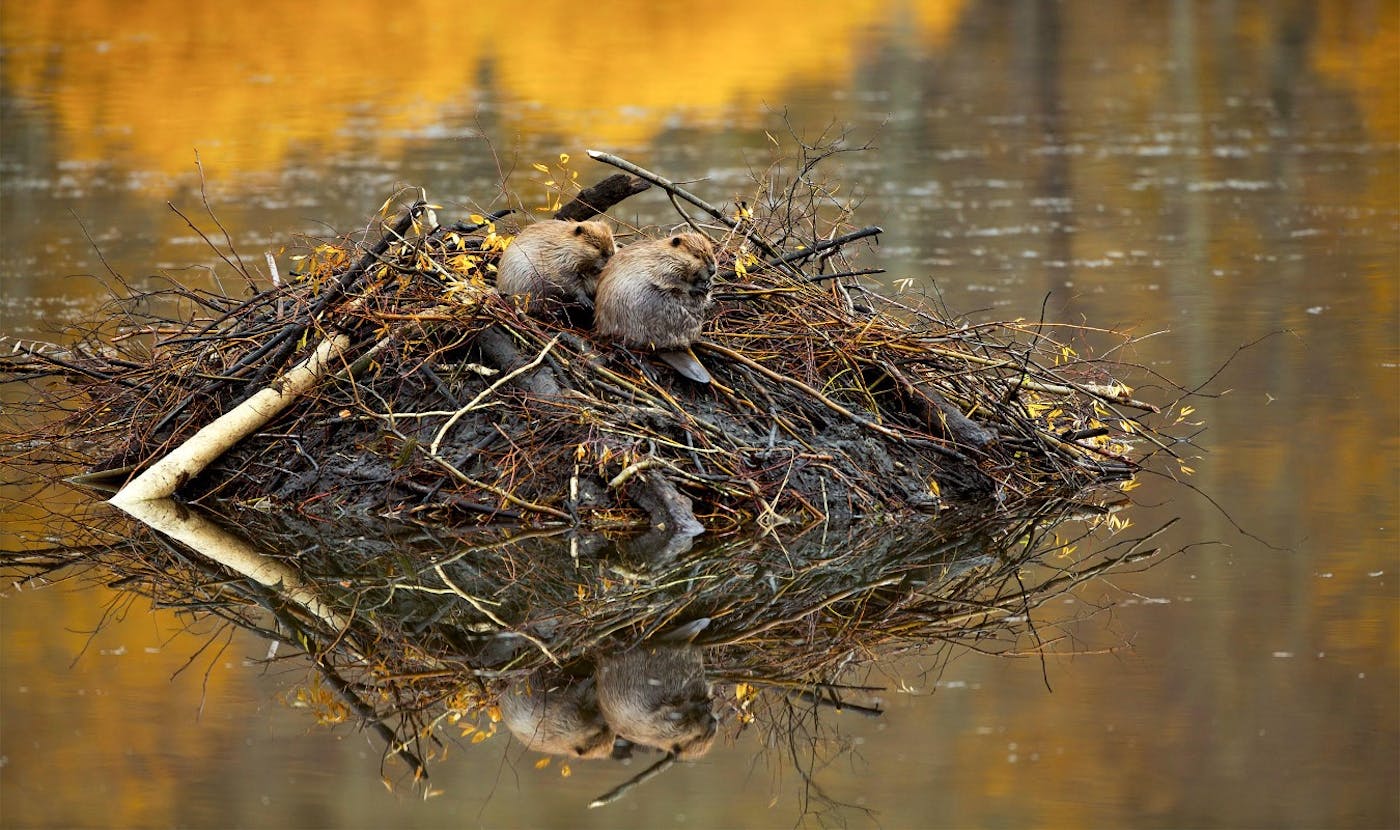Preserving and Restoring the Forest Biodiversity of the Western Great Lakes Region of the US
- Forests
- Biodiversity
- Wildlife Connectivity
- Indigenous Tenure
- Science & Technology
- Wildlife
- Northeast American Forests
- Northern America Realm
| Bioregion | Midwestern Tallgrass Prairie & Forest Transition (NA21) |
| Category | Nature Conservation Our project categories represent one of three core solutions pathways to solving climate change. Energy Transition focuses on renewable energy access and energy efficiency. Nature Conservation includes wildlife habitat protection and ecosystem restoration, as well as Indigenous land rights. Regenerative Agriculture supports farmers, ranchers, and community agriculture. |
| Realm | Northern America The Project Marketplace is organized by the major terrestrial realms divided into 14 biogeographical regions – N. America, Subarctic America, C. America, S. America, Afrotropics, Indomalaya, Australasia, Oceania, Antarctica, and the Palearctic realm, which coincides with Eurasia and is divided into Subarctic, Western, Central, Eastern, and Southern regions. |
| Partner | Superior Bio-Conservancy |
One Earth’s Project Marketplace funds on-the-ground climate solutions that are key to solving the climate crisis through three pillars of collective action — renewable energy, nature conservation, and regenerative agriculture.
The Western Great Lakes region has significant biodiversity and is the source of the Mississippi River and Lake Superior, providing freshwater for millions of people. It is home to the largest population of wolves in the Lower 48, with an estimated 4,400 individuals. Although protecting this region is of enormous importance to the survival of its biodiversity and ecosystem services, there is a vital deficit in conservation funding.
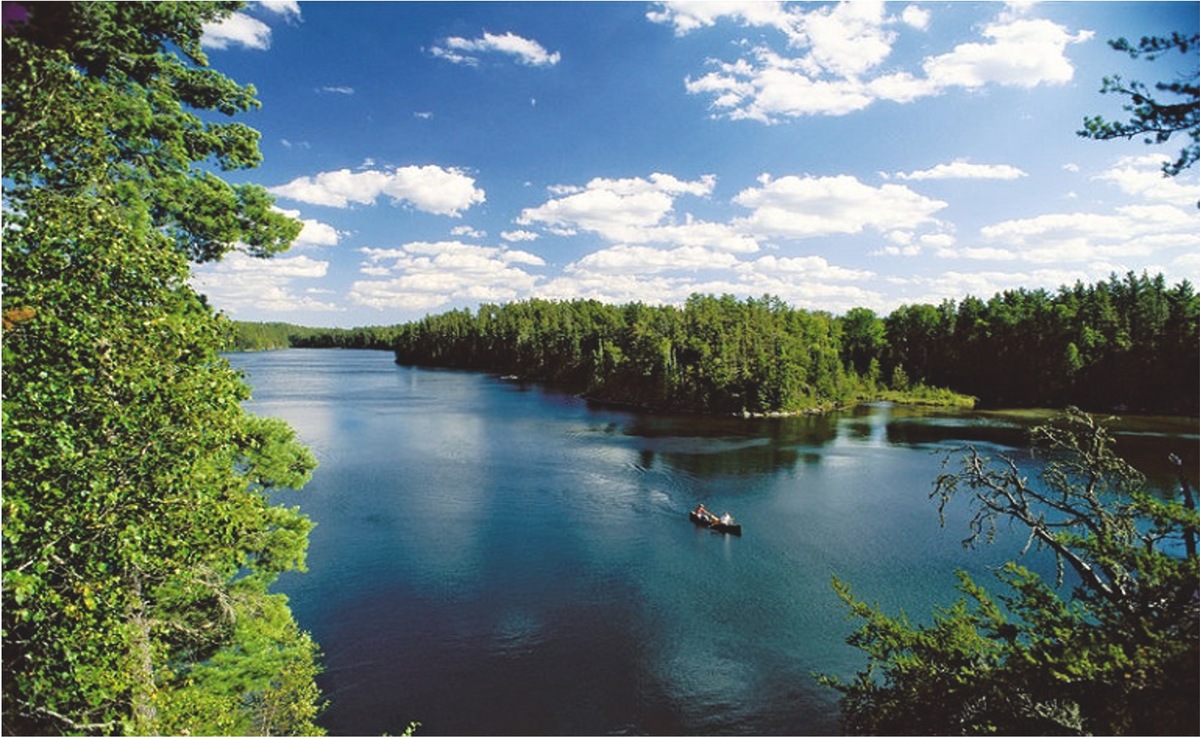
Image credit: Courtesy of Superior Bio-Conservancy
Superior Bio-Conservancy (SBC) aims to bring together a coalition of environmental groups and tribal leaders throughout the Lake Superior region to protect this land, designing a “re-wilding” plan with connecting wildlife corridors to support biodiversity that will have positive climate outcomes.
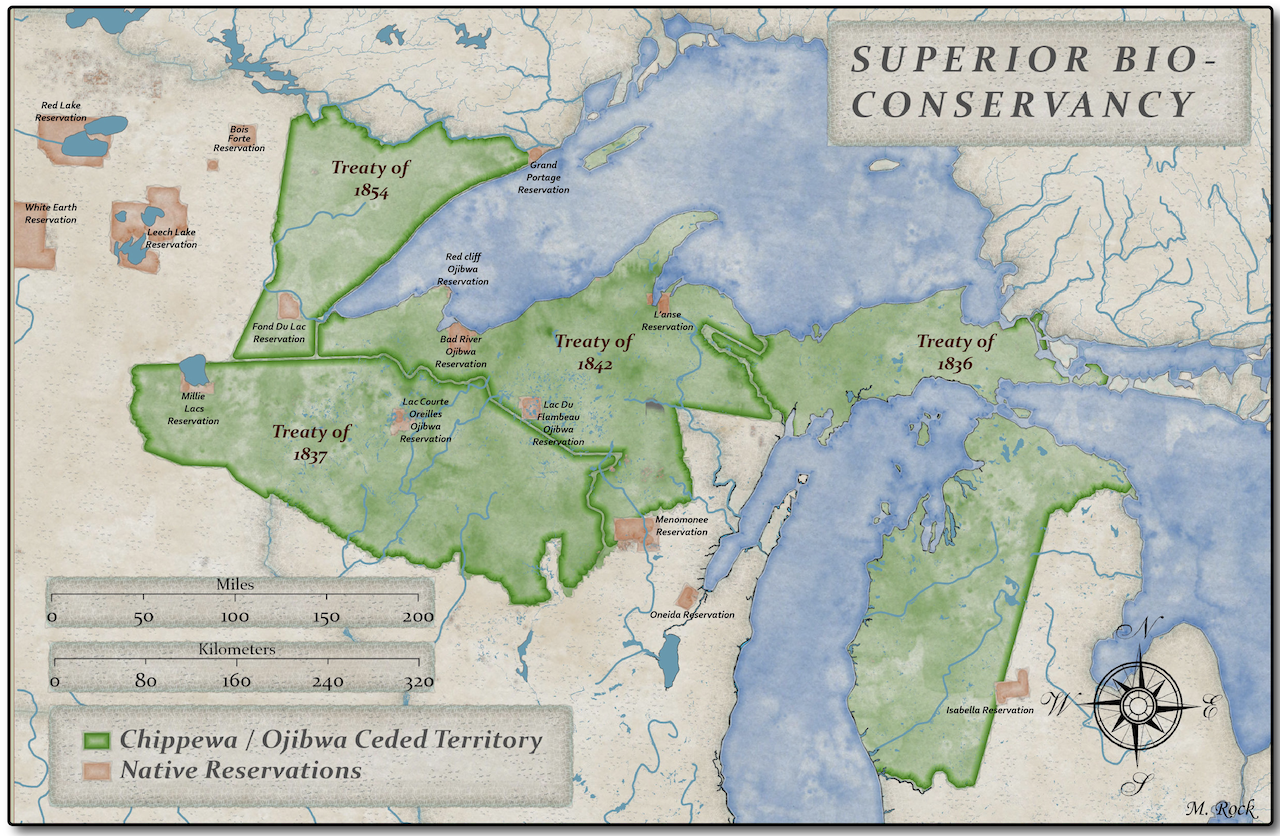
Image credit: Courtesy of Superior Bio-Conservancy
The public land in this region (Federal, State, and County), totals 21.5 million acres – 12.1 million acres in Minnesota, 4.4 million in Wisconsin, and 5 million in Michigan. Together, that comprises 38% of the north woods landscape in Minnesota, Wisconsin, and Michigan.
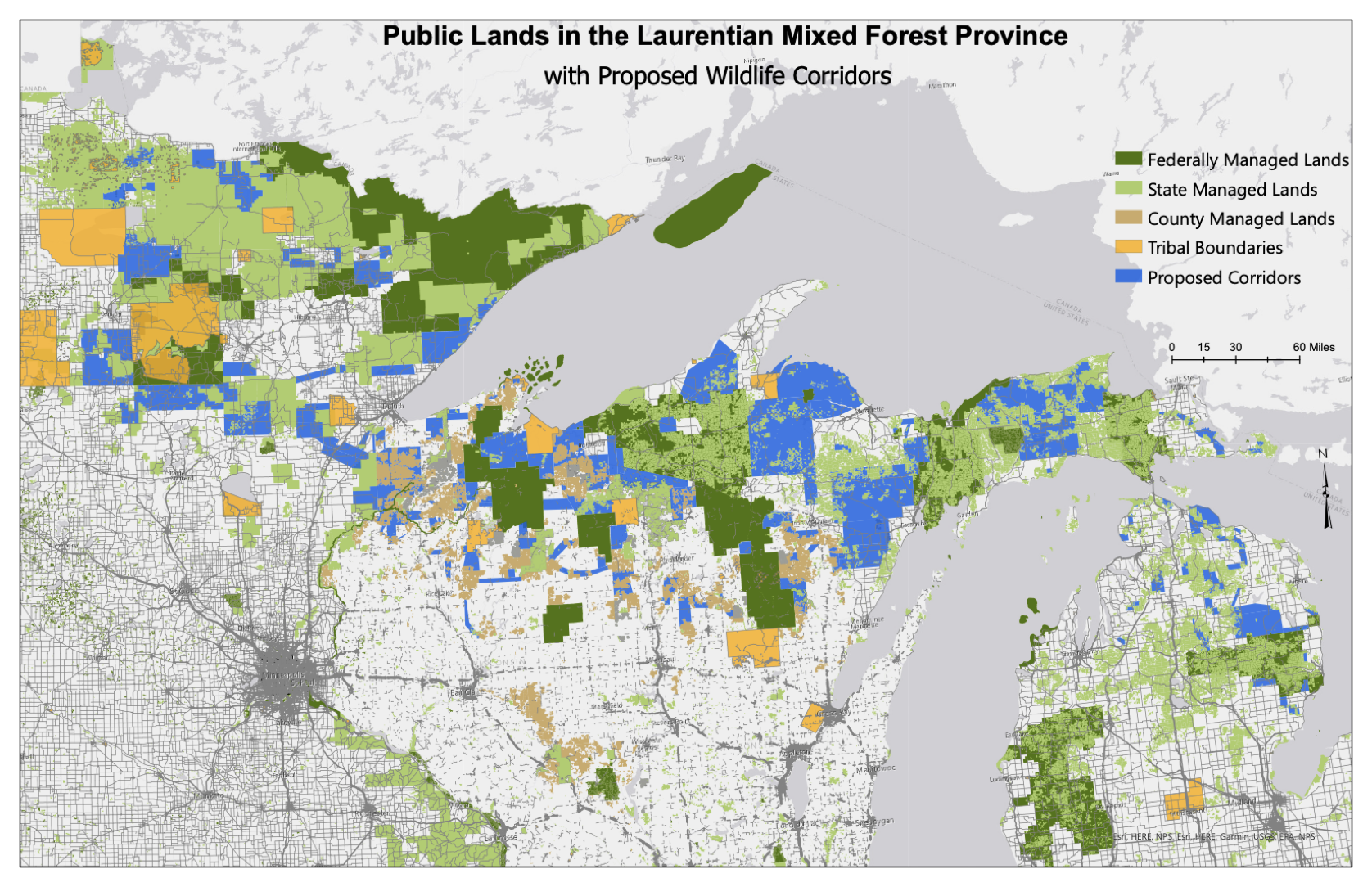
Image credit: Courtesy of Superior Bio-Conservancy
These connecting wildlife corridors across private land would add about 7 million acres of forest landscape under protection. These critical linkages, to connect the dots of existing fragmented public land parcels, would link the whole forested region to a 50% level of protection. Most of this land overlaps the Ojibwe ceded territory which has established usufructuary, (hunt and gather) treaty rights. Those rights are sovereign and serve as a conservation easement across all public land in the region. One of this project’s goals is to support public policies that respect these Ojibwe rights, values of land health and their kinship relationship with wolves. This is a health care plan for this region, providing sustained biodiversity, genetic exchange, and climate resilience.
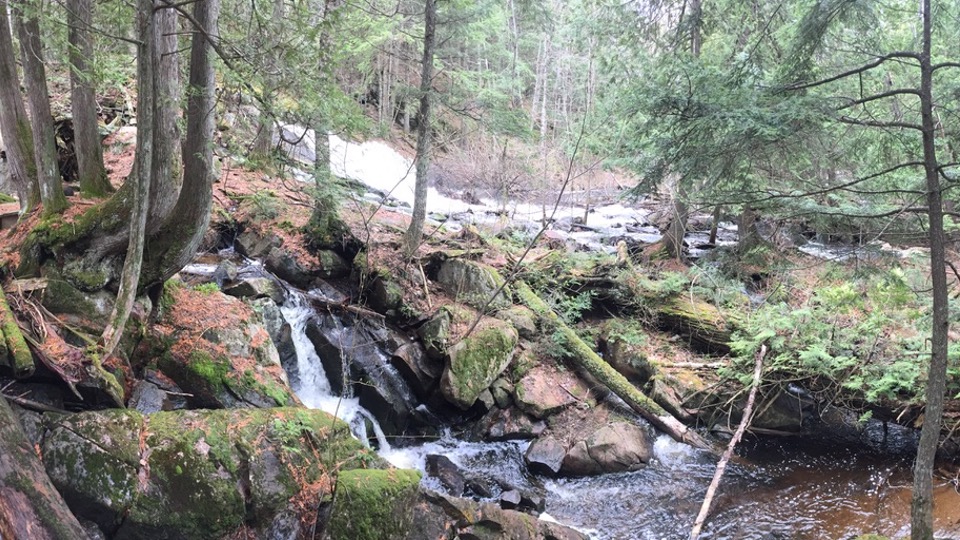
Image credit: Courtesy of Superior Bio-Conservancy
The project will also connect the environmental groups with limited capacity across Minnesota, Michigan, Wisconsin, and Ontario to push for public policies to mitigate the climate and biodiversity crisis.
With funding, SBC will work with the Great Lakes Indian Fish and Wildlife Commission (GLIFWC), land trusts and others to build this map and vision of wildlife corridors connecting the existing public lands. This would involve identifying and evaluating private lands and applying the science of corridor ecology to promote biodiversity, genetic exchange, and evolutionary processes unique to this ecosystem.

Image credit: Courtesy of Superior Bio-Conservancy
SBC estimates that with a budget of $75,000, they can identify and map about 7 million acres of corridors to connect the 21.1 million acres of public land within the Laurentian Forest Province. It also includes the entire 31.6 million acres watershed of Lake Superior part of which resides in Ontario, Canada.
The illustrated map will be used to market and communicate a conservation plan to philanthropic individuals, conservation organizations, and public agencies. It will also contribute to the “America the Beautiful” plan recently announced by President Biden to designate 30% of US lands for conservation as part of worldwide initiative for governments to expand their protected areas by 2030.
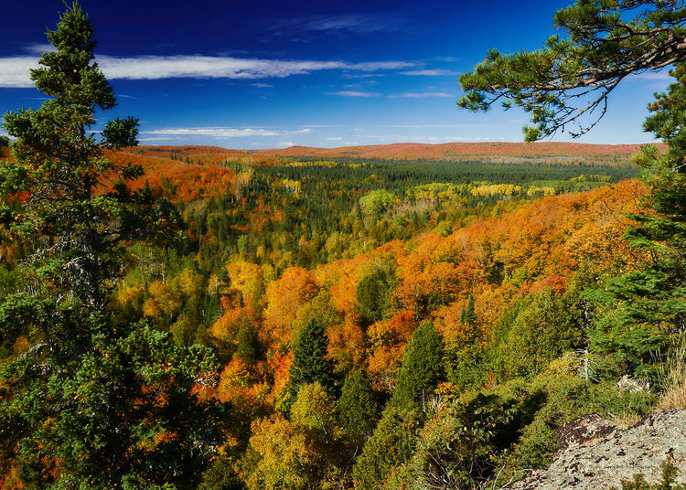
Image credit: Courtesy of Superior Bio-Conservancy
This is a high carbon landscape. The “Carbon Reserve” in this forested bioregion is critical to protect in order to mitigate the climate crisis. Eventually, the carbon sequestration values will be calculated to support the case for shifting away from unsustainable logging practices toward conservation to maintain these valuable carbon sinks in perpetuity.
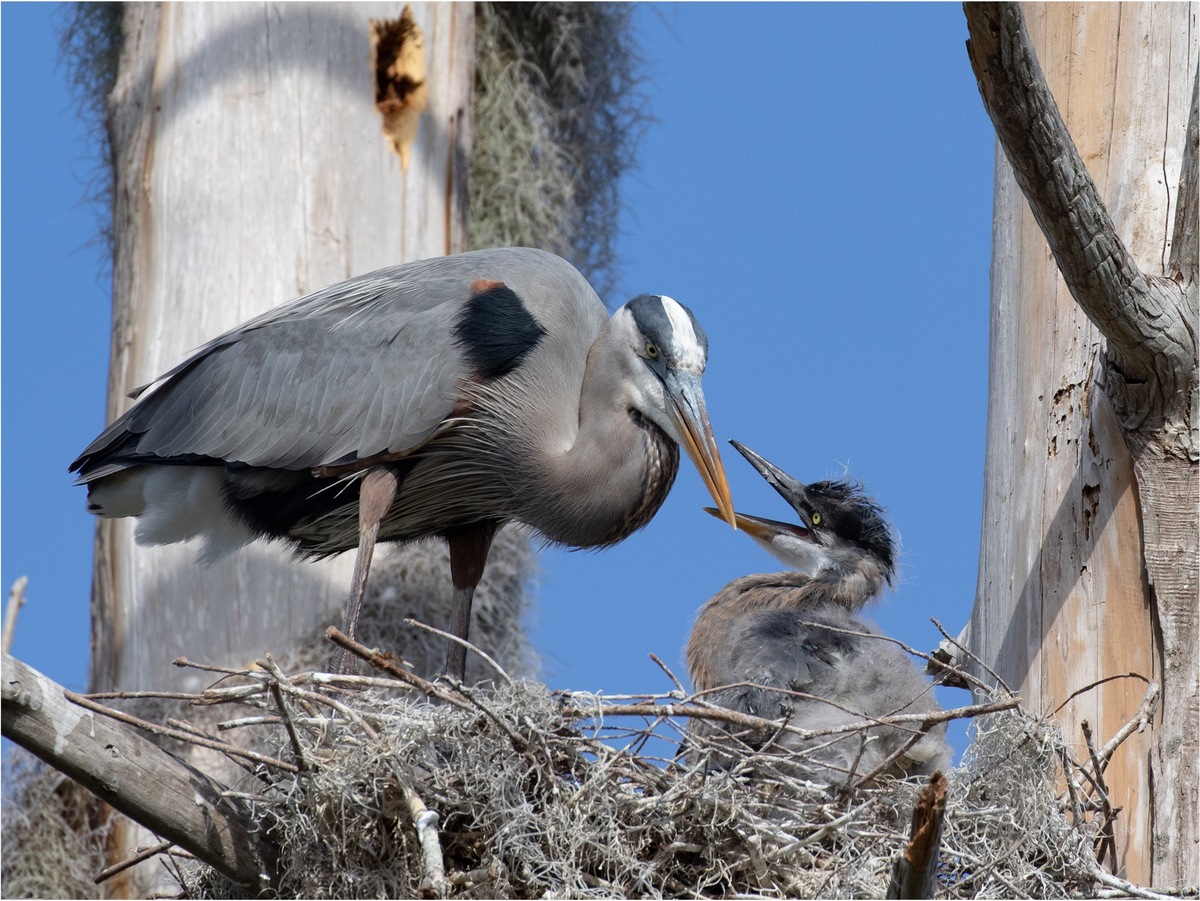
Image credit: Courtesy of Superior Bio-Conservancy
All life on Earth will benefit from this project. Protecting biodiversity like beavers who rebuild the hydrology in rivers and wolves who effect deer behavior browsing to benefit forests, will help heal the ecosystem. Land conservation and biodiversity needs be the priority of public policy, to store carbon and move towards climate stabilization.
